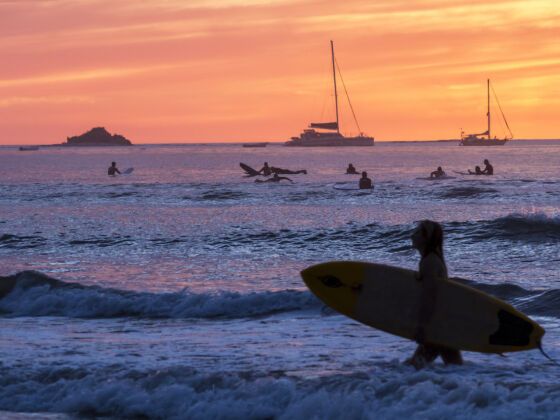I come to a point in the road where the buildings cease and the Tamarindo Wildlife Refuge takes over. There’s one last house, shaded by a mango tree rising above its roof.
I knock. A girl comes to the door.
-
- “Is anyone here that might want to buy a board?” I ask.
“No one here is looking for a board.”
No problem. There are plenty of other places to sell one back in town. I see a dry-erase board inside that has “volunteers wanted” written on it.
